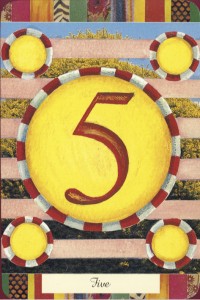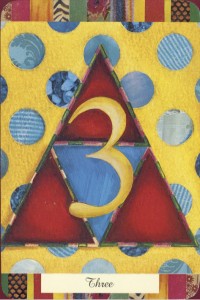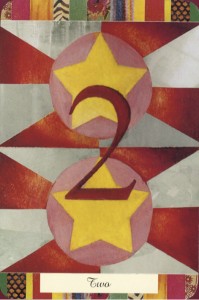What To Bring
 I asked my teacher, Lila Wheeler, if she had any advice on what I should bring with me for the 6-week retreat at IMS, and she said, “You mean, like a teddy bear?”
I asked my teacher, Lila Wheeler, if she had any advice on what I should bring with me for the 6-week retreat at IMS, and she said, “You mean, like a teddy bear?”
And I, of course, laughed.
But she said, “I’m not kidding about the teddy bear.”
Turns out, there’s sort of a tradition on these long retreats of people bringing things to help ease the transition, especially things that will make their room feel like “home.”
Lila said she has a special bedspread she likes to bring….and sometimes even a lamp! I’m coming by plane, so there won’t be anything like that.
For now, I think I’ll bring:
* A postcard of the Quan Yin statue that I love to visit at the St. Louis Art Museum
* A little, brass, “Happy Buddha” (round and about the size of a golf ball) that I think is really the image of some Chinese saint, but who cares…in my mind, it’s the Buddha
* The photo that I keep on my alter at home of my first teacher and on-going inspiration, Mirabai Bush
* A string of paper Tibetan prayer flags that’s in my kitchen right now
* Maybe a litte vase that I can put fresh wildflowers in
* The string of beads I made during the DPP to represent the Seven Factors of Enlightenment
* And something handwritten….I’m not sure what…maybe one of the letters I write to myself every year on New Year’s Day???
It feels like there’s something else, but I don’t know what. (I’m a greed type, so it might just be that.)
Hmmm.
I’ll keep you posted.
(image from: A Whole World, by Couprie and Louchard)
Wise Concentration
 The eighth fold of the Noble Eightfold Path is samma samadhi, usually translated as Wise (or Right) Concentration.
The eighth fold of the Noble Eightfold Path is samma samadhi, usually translated as Wise (or Right) Concentration.
In Dancing with Life, Phillip Moffitt writes:
“Right concentration…empowers your sense of presence in every other aspect of the path. Right concentration is the ability to collect and unify the mind. It enables you to direct your attention to an object of your experience and stay focused on it….
“There are two general types of meditation for establishing the steadiness of concentration that allows you to practice mindfulness: open field attention and deep absorption.
“The first of these, open field, is what the great Burmese meditation teacher Mahasi Sayadaw referred to as momentary concentration, in which your mind is briefly concentrated on a single object. He taught that such short-term concentration is sufficient for gaining insight from mindfulness practice…
“The second approach to practicing formal mindfulness meditation is to start by attaining absorption concentration, with in the Theravada tradition is called jhana. In jhana practice your mind becomes fully concentrated on a meditation object for an indefinite period of time, then moves to ever more subtle levels of awareness. After achieving an intensive state of stillness and one-pointedness, you begin to practice mindfulness…
“The importance of being able to achieve fully absorbed meditation states to attain deepening insight is debated among meditation teachers. There are also differing views as to what level of one-pointedness characterizes such states. But there is no debate about the importance of being able to collect and unify your mind in meditation in order to practice mindfulness. Unfortunately, in my years of experience conducting interviews, I’ve seen that only a modest percentage of students ever develop the concentration potential they naturally have.”
**
I have to admit that sounds fairly daunting.
Ah, but then Phillip goes on to say:
“If you want to develop more concentration capacity, I recommend attending a concentration-oriented meditation retreat, and leave all your ideas about why you can’t concentrate at home.”
Wise Mindfulness
 The seventh factor of the Noble Eightfold Path is samma sati, translated as Wise (or Right) Mindfulness.
The seventh factor of the Noble Eightfold Path is samma sati, translated as Wise (or Right) Mindfulness.
Here’s what Phillip Moffitt has to say in Dancing with Life:
“Right or wise mindfulness is much more than just paying attention. While wise mindfulness includes the attention process, which notices and stays with whatever is happening in the present moment, it also includes investigation of experience, which allows you to see it clearly, and it includes the attitudes of dispassion and compassion, which give you the strenght to fully receive the experience.
“Wise mindfulness is present in every moment of wise living through wise attention. You are not always going to have mindfulness, but it is your intention to be mindful that matters. However life is manifesting, your mindfulness informed by your intention allows you to live wisely at every step. In any given moment you may be very misinformed or lost in emotion, and so you act quite unskillfully. But this action is just episodic; it in not what you are about.
“Once you discover through wise mindfulness that you have gotten off the path, you know how to get back on the path. Therefore, even your unskillful moments become part of the path because you respond to them through wise mindfulness and intention.”
**
I love where he says that unskillful action is “just episodic.” I often act unskillfully–quite unskillfully–but that doesn’t mean I’m a bad person. My intention is to act skillfully. By paying careful attention, with an attitude of kindness and acceptance, it’s much more likely that the next time, I will be able to act skillfully….meaning, not cause harm to myself and others.
Up next: Wise Concentration
Wise Effort
 The sixth factor of the Noble Eightfold Path is samba vayama, usually translated as Wise (or Right) Effort.
The sixth factor of the Noble Eightfold Path is samba vayama, usually translated as Wise (or Right) Effort.
In Dancing with Life, Phillip Moffitt writes:
“Right effort is directing your attention so that you are not helplessly caught in the various mind states that arise. The Buddha describes four kinds of wise effort: avoiding unhealthy mind states; abandoning unhealthy mind states once they have arisen; moving the mind to healthy mind states; and maintaing the mind on healthy mind states that have already arisen.
“Attention is a function of the mind and is subject to training, although it often seems as if this is not so. However, energy follows attention, therefore whatever you place your attention on is what will receive energy in your life.
“Right effort is classically associated with working with your mind in meditation, but it also applies to working with your mind states in daily life. If you have a choice, you do not place your attention on thoughts that do not serve you, and you move away from thoughts that are obsessive, contracting, and limiting. Practicing these two forms of right effort doesn’t mean that you should seek to never have difficult thoughts; it just means that you shouldn’t stay stuck on them…
“Instead you would move your attention from identifying with the terrible thoughts to the suffering that is contained in the thoughts, which in turn will give rise to compassion and give you clarity to see how you are getting caught in whatever hurt you….
“Instead of being caught in reactive mind, you are able to accept that life includes such difficulty, i.e., ‘Betrayal feels like this.’ Do you see how this is right effort? Your external conditions and your emotional experience are no different, but you are no longer being defined by your emotional reaction. Amazingly, right effort really does work this way; it is not just some abstract idea.”
**
The phrase that stands out the most for me in this section is: energy follow attention. So as I prepare to retire at the end of next week, and get ready to go on my first 6-week retreat, I plan to be careful about where I place my attention. I don’t want to give any extra energy to anxiety about money or family or health or what’s going to happen in the future. I want all my energy to go toward doing whatever I can do in this present moment…including making responsible plans for the future….and then being open and able to respond to whatever actually does happens in the next present moment. Stay tuned.
Up next: Wise Mindfulness
Wise Livelihood
 The fifth factor of the Noble Eightfold Path is samma ajivo, translated as Wise (or Right) Livelihood. This means not earning one’s living in ways that bring harm to oneself or others, particularly if it involves killing.
The fifth factor of the Noble Eightfold Path is samma ajivo, translated as Wise (or Right) Livelihood. This means not earning one’s living in ways that bring harm to oneself or others, particularly if it involves killing.
Here’s what Phillip Moffitt has to say in Dancing with Life:
“To me, it also means not having a violent attitude in whatever you do for a living….In our time, it is not usually the profession but rather the manner in which the profession is practiced that causes wrong livelihood. For example, if you recklessly drive your car while commuting to work, or prey on the ignorance of others, or mislead or trick others in order to earn a living, you are practicing wrong livelihood.
“In my view, any job that takes away joy, whether your own or others’, also constitutes unwise livelihood, whereas any job that supports and nourishes well-being and the sense of the possibility is wise livelihood.
“Wise livelihood matters as a practice because it brings freedom to the mind now and in the future, while unwise livelihood thrusts the mind into turmoil now and plants the seed for even greater turmoil in the future.”
**
I’m retiring at the end of the month, but that doesn’t mean I’m off the hook in terms of Right Livelihood. The Pail word ajivo, which is translated here as “livelihood,” actually means something closer to “fuel for the fire of living.” So it’s not just about what one does to bring in money but, more deeply, what one does to sustain oneself. After I retire, I’ll use savings and investments to buy things and to pay my bills. But what will I do to sustain the fire of my life?
Dharma Town!
Next Up: Wise Effort
Wise Action
 The fourth factor of the Noble Eightfold Path is samma kammanta, translated as Wise (or Right) Action. Traditionally, Right Action is taught as not indulging in bodily actions that cause harm to oneself or others, specifically: not killing, not stealing and not engaging in sexual misconduct. These are the first 3 of the 5 Training Precepts. The 4th is to refrain from actions of speech that cause harm, specifically: not lying. (The 5th is to refrain from using intoxicants that cloud the mind….and make it much less likely that you will adhere to the first four!)
The fourth factor of the Noble Eightfold Path is samma kammanta, translated as Wise (or Right) Action. Traditionally, Right Action is taught as not indulging in bodily actions that cause harm to oneself or others, specifically: not killing, not stealing and not engaging in sexual misconduct. These are the first 3 of the 5 Training Precepts. The 4th is to refrain from actions of speech that cause harm, specifically: not lying. (The 5th is to refrain from using intoxicants that cloud the mind….and make it much less likely that you will adhere to the first four!)
Here’s what Phillip Moffitt writes in Dancing with Life:
“Wise action is any action that liberates the mind, moves you toward freedom from suffering, and supports a feeling of well-being that is independent of external conditions. It arises out of clear comprehension (sampajanna), meaning you are clear about what is needed, what is appropriate, and what is doable within your limits. In order to take action with such clarity, you approach decisions with mindfulness and with awareness of the dharma.
“Wise action doesn’t just apply to big decision, but applies to small ones as well. You see the truth of suffering and impermanence and that your immediate situation is caused by impersonal causes and conditions, and this larger dharma view allows right action to unfold. You cultivate being mindful of all your actions, even those that you don’t ordinarily notice, such as how fast you walk, how you sit at your desk, how you decide what to eat, and how fast you eat it. Wise action is reflected in how you schedule and pace yourself, how you treat others, and how you nourish yourself.”
Wow. I don’t know about you, but that last one really hit home.
Up next: Right Livelihood
Wise Speech
 The third factor of the Noble Eightfold Path is samma vaca, translated as Wise (or Right) Speech. Traditionally, right speech means not speaking falsely, harshly, divisively or engaging in idle chatter.
The third factor of the Noble Eightfold Path is samma vaca, translated as Wise (or Right) Speech. Traditionally, right speech means not speaking falsely, harshly, divisively or engaging in idle chatter.
In Dancing with Life, Phillip Moffitt writes:
“The practice of right speech is built around meeting three conditions simultaneously: Say only what is true and useful and timely. If any one of these criteria isn’t met, then silence is the wise form of speech.”
From personal experience, I have to admit that this is a lot harder than it sounds.
Phillip says, “You may not realize the aggressive nature of your speech until you try to make it a mindfulness practice… For instance, you may feel that if you know something is true, then it is okay to speak it. But the Buddha was quite explicit in saying that when truth is spoken in an untimely manner, it is not wise speech…..Applying the filter of saying only what is useful is even harder…. Practicing right speech includes actively refraining from giving unsolicited opinions or stating your view when it serves no purpose.”
Gosh.
“At first practicing right speech can seem like expecting perfectionism, and it certainly is true that the harm resulting from unwise speech can seem slight at times. But as many students have discovered once they have truly engaged in this practice, the cumulative effect of unwise speech is quite dramatic, although mostly unseen. It drains your energy, and it encourages you to get caught in clinging to your views, to become lost in desire, and to become more aversive, vindictive, and defensive. And it causes other to pay less attention when you speak.”
Hmmm.
Next up: Wise Action
Wise Intention
 The second factor on the Noble Eightfold Path is samma sankappa, usually translated as Wise (or Right) Intention.
The second factor on the Noble Eightfold Path is samma sankappa, usually translated as Wise (or Right) Intention.
Here’s what Phillip Moffitt has to say, in Dancing with Life:
“In Buddhist terms, practicing right or wise intention means making a commitment to not cause suffering for yourself or others, which requires renouncing those desires that would cause harm. You meet the world with compassion, loving-kindness, generosity, and integrity, and you strive diligently toward liberation. Your wise intention empowers you to align your thoughts, words, and action with your deepest understanding.
“Intention is the pivot point that allows you to dance with life. It is the bridge between understanding and action. Understanding without intention is conceptual and passive, no matter how profound it may be. Wise intention, on the other hand, has an immediate, energetic, attentive quality.
“…There is a big difference between goals and right intention. Your goals are your preferences for the future. Your goals provide inspiration and direction as well as determine how you allocate your time and resources. But your goals do not determine how you act right now. Instead, your intention determines how you actually think, act, and speak in any given moment.
“The following analogy makes clear the distinction between goals and intention. Let’s say you and a friend decide to hike up a mountain. You see the mountaintop and you know that reaching it is your goal–it provides direction and inspiration for the hike. It even informs your preparation and resource allocation–the time you need to set aside, how much water and food you will take along, how you will dress, etc. Therefore, committing to the goal is a vital part of the hike.
“But the actual experience of hiking is very different than reaching your goal, the mountaintop. Your journey up the mountain consists of a series of single steps, rest stops, moments of seeing nature, and sharing companionship. The hike happens in the present moment in each individual step, and each step is primarily defined by your intention. If all you focus on is the goal, you can easily miss being present for the hike.”
Next up: Wise Speech
Wise Understanding
 The first of the eight “folds” of the Buddha’s Eightfold Path is samma ditthi, traditionally translated as Right View or more recently, Right Understanding. But “right” can sound like a value judgment (“I’m right, you’re wrong”), when what is really meant is something closer to “wise,” or “skillful,” even “helpful” or “healthy.”
The first of the eight “folds” of the Buddha’s Eightfold Path is samma ditthi, traditionally translated as Right View or more recently, Right Understanding. But “right” can sound like a value judgment (“I’m right, you’re wrong”), when what is really meant is something closer to “wise,” or “skillful,” even “helpful” or “healthy.”
Here’s what Phillip Moffitt says about this in Dancing with Life:
“I sometimes use the phrase deep understanding instead of wise understanding to highlight the difference between ‘dharma understanding’ and ‘regular knowledge.’ Regular knowledge is surface understanding about events, which allows you to control conditions in order to fulfill your desires. In contrast, cultivating deep understanding enables you to find peace of mind in all circumstances, regardless of whether the surface conditions of your life are pleasant or unpleasant.”
When describing the Eightfold Path, Right View / Wise Understanding is normally listed first, but it’s not something you “do” or “get” and then go on to the next step. It is a way of setting off in the right/wise direction, but it’s also the result of following the Path, because doing so will naturally lead to a deeper, wiser understanding of how to live without suffering.
Here’s what Phillip has to say:
“It is taught that right view is understanding and framing your experience through the Four Noble Truths. Right view is also the understanding that your actions have consequences. Your first encounter with wise understanding may come from a personal experience of suffering so overwhelming that you realize there must be a better way to cope with life. Or it may arise out of an urgent need to find some meaning in your life that while not unhappy, seems superficial….Through wise understanding you clarify what really matters to you and formulate a set of values by which to live.
“Right view comes at the beginning of the Eightfold Path because without realizing that there is dukkha [stress, suffering, some nagging sense of dissatisfaction] in your life and understanding that you can do something about it, you would never be motivated to start. Wise Understanding is also the continuous, cumulative result of practice.
“For this reason, it is useful to think of the Eightfold Path as both a sequence of eight steps that follow one after the other and as an interconnected set of eight energetic practices that relate circularly and directly to one another, such that wherever you start on the path is beginning. Whichever aspect of the Eightfold Path you focus on, you engage all the parts directly or indirectly. And if you explore any of the eight factors in sufficient depth, it will lead you naturally to another.”
Next up: Wise Intention.
Dancing on the Eightfold Path
 The Monday night “Dancing with Life” KM Group has now started reading/discussing Chapter 20 (of Dancing with Life, by Phillip Moffitt). The chapter is titled: Developing Intention, Your Ally on the Path and it focuses on each of the 8 “factors” of the Noble Eightfold Path. Which are:
The Monday night “Dancing with Life” KM Group has now started reading/discussing Chapter 20 (of Dancing with Life, by Phillip Moffitt). The chapter is titled: Developing Intention, Your Ally on the Path and it focuses on each of the 8 “factors” of the Noble Eightfold Path. Which are:
Wise Understanding
Wise Intention
Wise Speech
Wise Action
Wise Livelihood
Wise Effort
Wise Mindfulness
Wise Concentration
Phillip writes: The Noble Eightfold Path is not a set of beliefs or laws but rather a practical, direct experience method for finding meaning and peace in your life.
Think of it as an organic blueprint from which you organize and live your life. Each of the path factors defines one aspect of behavioral development needed for you to move from suffering to joy. Its eight factors function as an integrated system or matrix that supports and informs all parts of your life.
[The Buddha said the Four Noble Truths of suffering and the end of suffering must be “penetrated to by cultivating the Path.”] By “cultivating,” the Buddha means “attending to, nourishing, and manifesting” each of these factors of wisdom in your life.
***
I’ll post what Phillip has to say on each of these factors over the next eight days. Stay tuned.
(image: Tarot Maddonni)
